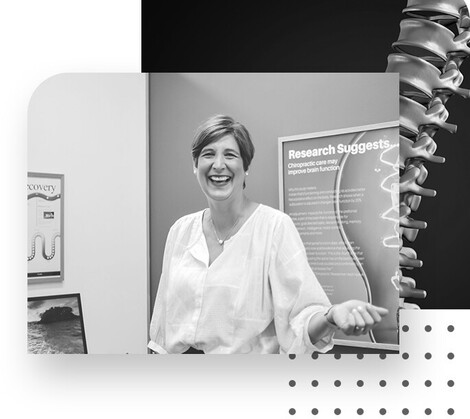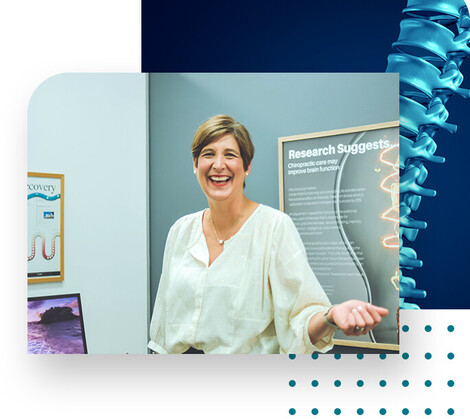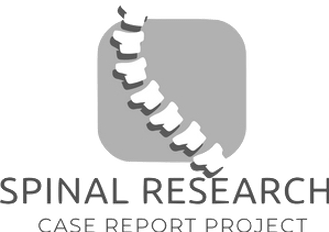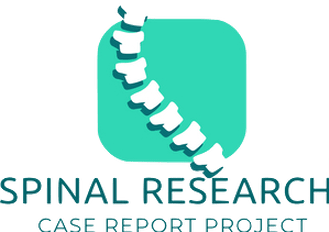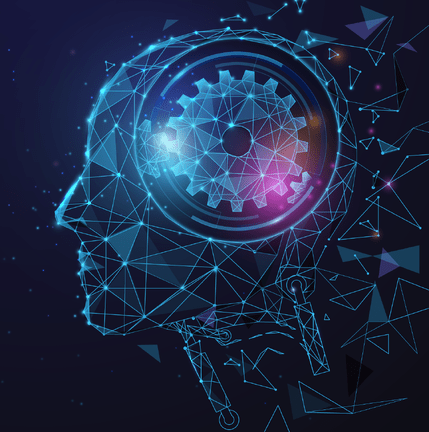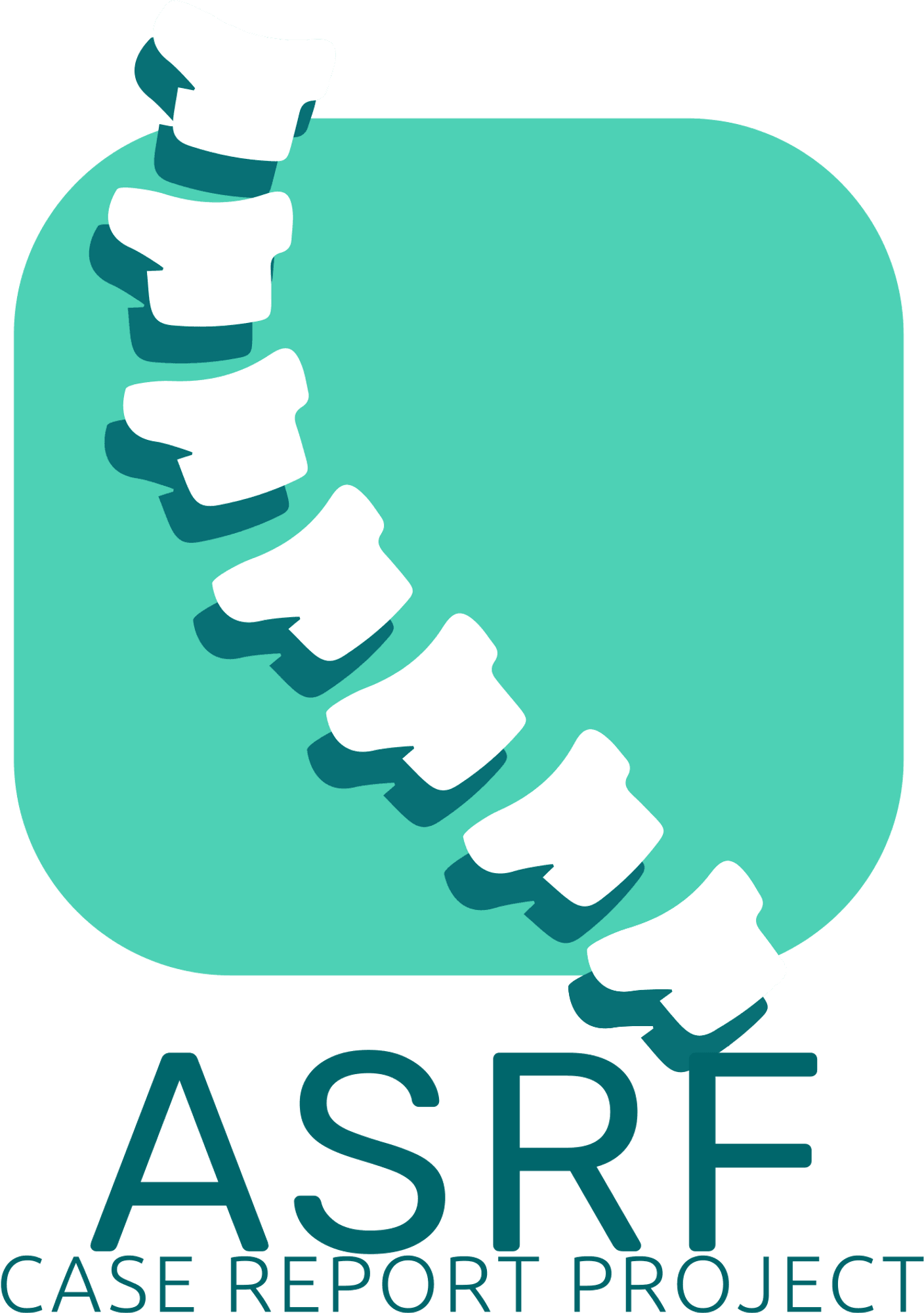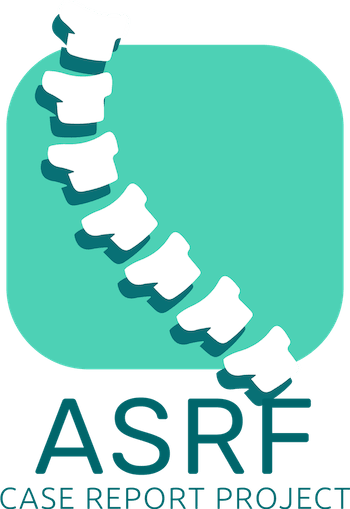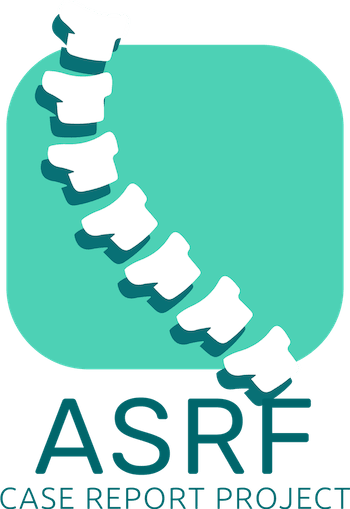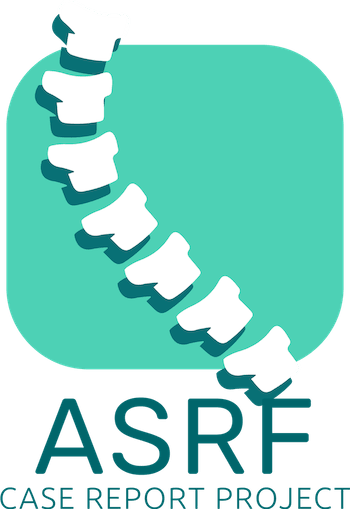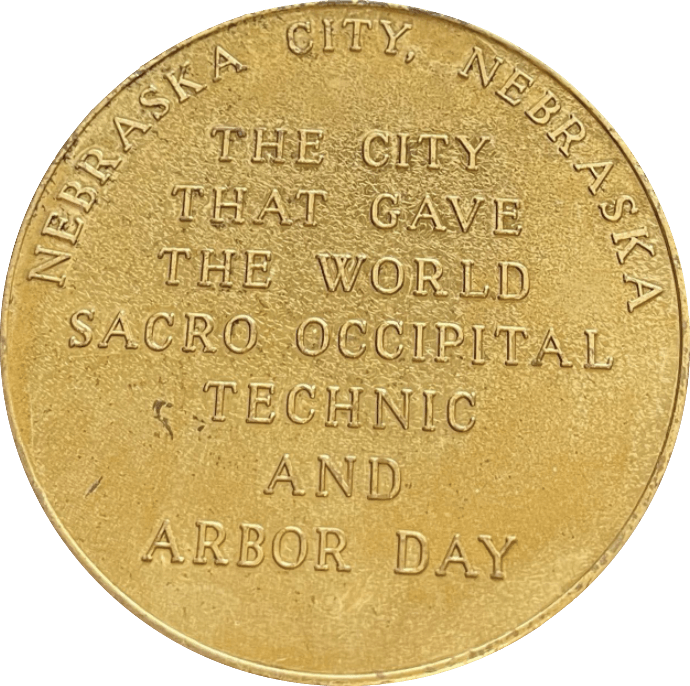Champion: Referred testicular pain and chiropractic
Lourie: Undescended testical: Case report
Chu & Wong: Chronic orchalgia from disc herniation
Apalvik: Chronic testicular pain and discomfort
McNamara: Management of Levator Ani Syndrome
Chu et al: Presumptive prostate cancer presenting as Low Back pain
Leach: Varicocele Resolution in a Healthy Male
Harby: Iliotibial Band Syndrome
Chu: Taming of testicular pain complicating lumbar disc herniationVaricocele Resolution in a healthy male
Seaman et al: Improved Mental Health and Quality of Life in a 51-Year-Old Male under Chiropractic care
Real-Jiménez et al: Chiropractic and multidisciplinary management of a traumatic injury in a 38 year old female
Seaman et al: Improvement in self-reported Mental Processing and Quality of Life in a 74-year old male concomitant with Chiropractic care
Papers
Editorial: Into the Year of the Rabbit with nothing but good news for Chiropractic
Abrahams: Philosophy: To be, or not to be?
Eldemire: Path to Australian registration (as a chiropractor)
Blum: Channeling healing energy: The power of touch in the chiropractic clinical encounter, Part three.
Masarsky: Obstructive sleep apnea, gender, and tone
Terre & Blum: Non-cardiac chest pain: interdisciplinary algorithm for clinical care
Cuthbert: Reflections on the influence of George J Goodheart Jr
Osuna &Pérez-Uñate: Opinions and Perceptions Regarding Access to Musculoskeletal Rehabilitation Clinics for Latino Immigrants in the United States
Janke: Side effects of the Chiropractic adjustment: And questions which arise
Lin: One month of Abstracts from the CHIROPRACTIC page on Facebook
Cuthbert: Applied Kinesiology Chiropractic and Cranial Therapy
Eldemire: Towards a better relationship with patients on the Autism spectrum
Ebrall: The emergence of Chiropractic Education in Australia
Improvement in Forward-Head posture, Mental Health and Erectile Function in a 42-Year-Old Male under Chiropractic care: A case report
Abstract: A 42-year-old male presented for chiropractic care with primary complaints of worsening low back pain with referred pain spreading to both glutes and down his legs.
A complex history of mental illness, stress, and alcoholism as well as dependance on pharmacological intervention was noted.
Over the course of care, the patient noted significant improvements in his mental health leading him to decrease his antidepressant medication. He also noticed significant improvement in erectile function.
Outcomes were consistent with improvements in objective tests, postural findings, and with no other significant changes to lifestyle or medical management. This case indicates that further research into chiropractic care and mental health outcomes, as well as chiropractic care and male reproductive health may be beneficial.
Indexing Terms: Chiropractic; erectile dysfunction; LBP; depression; mental health.
Cite: Croke O, Postlethwaite R, McIver C. Improvement in Forward-Head posture, Mental Health and Erectile Function in a 42-Year-Old Male under Chiropractic care: A case report. Asia-Pac Chiropr J. 2023;3.4. URL apcj.net/Papers-Issue-3-4/#CrokeErectileDysfunction.
Referred Testicular pain and Chiropractic: A conservative treatment approach
Abstract: The testes are a potential sight for referred pain from the lower back and pelvis. In this case a man presented with a four-year history of pain in his left testicle. The pain was alleviated by adjustment of sacrum and L5 subluxations. A complicating factor was an anatomically short leg, which was addressed with the judicious use of a shoe lift as indicated by Gonstead analysis of the patient’s standing X-rays..
Indexing Terms: chiropractic; testicular pain; anatomical short leg; heel lift.
Cite: Champion S. Referred Testicular Pain and Chiropractic: A Conservative Treatment Choice. Asia-Pac Chiropr J. 2023;3.4. URL apcj.net/Papers-Issue-3-4/#ChampionTesticularPain
Undescended Testicle: A case report
Abstract: The cause for undescended testes is unknown, and medical treatment involves surgery, which can have complications. This case study is presented to demonstrate a chiropractic approach to this problem.
Indexing Terms: chiropractic; Cryptorchidism; undescended testicle; lazy bowel; child; ilium; PIIn.
Cite: Lourie S. Undescended testicle: A case report. Asia-Pac Chiropr J. 2023;3.4. URL apcj.net/Papers-Issue-3-4/#LourieCryptorchidism
Chronic Orchialgia stemming from Lumbar Disc herniation: A case report and brief review
Abstract: Chronic orchialgia can be the result of pathological processes of the scrotal contents or stem from non-intrascrotal structures. Successful pain management depends on identifying the source of localised or referred pain.
This is a case report of a 39-year-old male sports coach who presented with low back pain, right orchialgia, and sciatica refractory to conservative management. Magnetic resonance (MR) imaging revealed disc protrusion at L3/L4 and L4/L5 levels.
Positive outcomes in relieving back and testicular pain were obtained after a total of 30 chiropractic sessions over a 9-week period. The evidence of the subjective improvement was corroborated by regression of the herniated discs documented on the repeat MR imaging. While chronic orchialgia is not an uncommon problem for men of all ages, it has seldom been described in association with lumbar discogenic disease.
The current study provides preliminary support for a link between orchialgia and lumbar disc herniation. Chiropractic manipulation had provided a mechanistic alleviation of noxious lumbar stimuli, leading to symptomatic and functional improvements.
Indexing Terms: chiropractic; discogenic disease; lumbar disc herniation; orchialgia; testicle; Men’s Health.
Cite: Chu ECP, Wong AYL. Chronic Orchialgia stemming from Lumbar Disc Herniation: A case report and brief review. Asia-Pac Chiropr J. 2023;3.4. URL apcj.net/Papers-Issue-3-4/#ChuWongOrchialgia
Chiropractic management of chronic testicular pain and discomfort: A case series
Abstract: This paper looks at the correlation between vertebral subluxations and testicular discomfort and pain. Three cases are used to give further clinical evidence between this cause and effect. Although it is important to rule out more sinister reasons for testicular symptoms, the potential neurological disturbance from a subluxated vertebrae as a cause should not be overlooked.
This case series reports the benefits that a patient may experience when a subluxation is identified and corrected in a specific manner.
Indexing Terms: chiropractic; Men’s Health; testicular pain; testicular discomfort; chronic scrotal pain; orchialgia; Gonstead Methods.
Cite: Apalvik. A Chiropractic management of chronic testicular pain and discomfort: A case series. Asia-Pac Chiropr J. 2023;3.4. URL apcj.net/Papers-Issue-3-4/#ApalvikChronicTesticularPain
The complete paper with radiographs exceeds the capacity of the Journal's ISP. Hence it is available here as (i) the paper and (ii) the images, or from here as a complete file.
Gonstead approach to the Chiropractic management of Levator Ani syndrome
Abstract: This paper will discuss the resolution of levator ani syndrome symptoms using a Gonstead approach to the Chiropractic management of a 67- year-old man with ‘Levator Ani’ syndrome.
Indexing Terms: chiropractic; levator ani syndrome; sacrum; sacral segment S3;Gonstead Methods; Men’s Health.
Cite: McNamara C. Gonstead approach to the chiropractic management of Levator Ani syndrome. Asia-Pac Chiropr J. 2023;3.4. URL apcj.net/Papers-Issue-3-4/#McNamaraLevatorAni
Presumptive Prostate Cancer presenting as Low Back Pain in the Chiropractic office: Two cases and literature review
Abstract: Prostate cancer is a common type of cancer in men and may metastasize to the spine and pelvis, causing back and/or radicular pain that appears to be musculoskeletal. This presents a diagnostic challenge and can be complicated by a lack of routine screening for prostate cancer.
In two similar cases, elderly males (ages 78 and 82) with no known history of cancer and no previous prostate-specific antigen screening presented to a chiropractor with chronic, worsening radiating low back pain. In each case, a previous provider obtained radiographs and ascribed symptoms to a non-cancerous aetiology (i.e., lumbar spondylosis, osteoporotic compression fracture), treated with nonsteroidal anti- inflammatory medications and physiotherapy. Given each patient’s progressive worsening and neurologic deficits, the chiropractor ordered lumbar magnetic resonance imaging, revealing potential spinal metastasis. The chiropractor referred each patient to an oncologist who performed additional testing, making a presumptive diagnosis of prostate cancer. A literature review identified seven cases of previously undiagnosed prostate cancer presenting to a chiropractor. Including the current cases, patients were often older, presenting with thoracolumbar pain caused by spine or pelvic metastasis.
The current cases and literature review illustrate that men with undiagnosed metastasis from prostate cancer may present to chiropractors complaining of spinal pain. Chiropractors should be aware of red flags warranting imaging such as older age and new or progressive symptoms and should refer patients to an oncologist when suspecting prostate cancer.
Indexing terms: chiropractic; Men’s Health; aged; neoplasm metastasis; low back pain; prostatic neoplasms.
Cite: Chu ECP, Lai C R, Leung BK. Presumptive Prostate Cancer Presenting as Low Back Pain in the Chiropractic Office: Two Cases and Literature Review. Asia-Pac Chiropr J. 2023;3.4. URL apcj.net/Papers-Issue-3-4/#ChuetalPresumptiveProstateCancer
Varicocele resolution in a healthy male with Gonstead Methods chiropractic: A case report
Abstract: A 39yo male presented with left testicular pain from a prominent varicocele of recent onset, and left low back pain. Examination revealed a primary left ilium subluxation of the sacroiliac joint (SIJ) which was corrected using specific Gonstead Chiropractic adjustments. The varicocele, the testicular pain, and low back pain resolved in a 4‐week period.
Indexing terms: Varicocele; Sacroiliac Joint; sacrum; S2; ilium; Gonstead; Chiropractic; Pampiniform Plexus; Testicular Pain.
Cite: Leach D. Varicocele resolution in a healthy male with Gonstead Methods chiropractic: A case report. Asia-Pac Chiropr J. 2023;3.4. URL apcj.net/Papers-Issue-3-4/#LeachVaricoceleResolution
Gonstead chiropractic management of Iliotibial Band Syndrome: A case report
Abstract: This case study presents the Gonstead chiropractic management of a long distance runner suffering from diagnosed iliotibial (ITB) syndrome and the achievement of a positive outcome with resolution timing considered shorter than typical expectations. This case report highlights the efficacy of Gonstead chiropractic care as the management modality of choice for this condition.
Indexing Terms: Chiropractic; Iliotibial band; ITB; Sacroiliac joint; Running; Knee pain; Pelvis; Subluxation.
Cite: Harby B. Gonstead chiropractic management of Iliotibial Band Syndrome: A case report. Asia-Pac Chiropr J. 2023;3.4. URL apcj.net/Papers-Issue-3-4/#HarbyITB
Taming of the testicular pain complicating lumbar disc herniation with spinal manipulation: A case report
Abstract: Degenerative disease of the lumbar spine is often ignored as a potential cause of testicular pain because the exact link between the two remains uncertain.
This article reports the case of a 60y man with a 3y history of low back pain and unexplained right testicular pain for 2y. Painful symptoms were negatively affecting his social, physical, and sexual functions. After failure to achieve pain relief through multiple types of therapy, the patient sought chiropractic treatment for his condition.
Lumbar spine magnetic resonance imaging (MRI) revealed disc protrusion at the L1/L2, L3/L4, and L4/L5 segments causing thecal sac indentations. Due to the absence of direct testicular causes, the medical impression was chronic testicular pain (CTP) complicating lumbar disc disease.
The patient experienced regular improvement in his low back and testicular pain with complete resolution of both after 8 weeks of chiropractic treatment. This article describes an overlook of the aetiology of this patient’s testicular pain and a successful option in treating the patient. CTP has multifactorial ethology. An excellent treatment outcome depends heavily on recognising the origin of the pain.
Indexing Terms: Chiropractic; back pain; lumbar disc herniation; testicular pain; Men’s Health.
Cite: Chu ECP. Taming of the testicular pain complicating lumbar disc herniation with spinal manipulation: A case report. Asia-Pac Chiropr J. 2023;3.4. URL apcj.net/Papers-Issue-3-4/#ChuTamingTesticularPain
Case Reports
Bella, the update: 9 year old canine with lumbar disc syndrome
Abstract: On initial presentation a small dog with a veterinarian diagnosis of lumbar disc syndrome following an MVA which injured her head and neck was found by the Chiropractor to have upper cervical involvement.
Human care protocols were applied to correct upper cervical subluxation and the dog, Bella, showed immediate signs of improvement.
Twelve months later she is fully recovered and with normal mobility and agility for her age. I maintain her recovery has followed the application of basic chiropractic principles to identify and correct subluxation, in this case about Bella’s upper cervical spine
Indexing Terms: Animal, chiropractic, upper cervical.
Cite: Ierano J. Bella, the update: 9 year old canine with lumbar disc syndrome. Asia-Pac Chiropr J. 2023;3.e. URL apcj.net/Papers-Issue-3-4/#IeranoBella
Resolution of Asthma symptoms and improvements in Gait Parameters in a paediatric patient with Sever’s Disease receiving Chiropractic care: A case report
Abstract: The purpose of this paper is to discuss the positive outcomes obtained with a multimodal program of chiropractic care in a paediatric patient who suffered from asthma and Sever’s disease.
A 9-year-old male patient was brought into a Chiropractic clinic by his parents looking for a second opinion for a diagnosis of bilateral Sever’s disease. During the examination, it was found that he also suffered from asthma. The patient received 17 chiropractic adjustments in a span of two months, averaging a frequency of twice per week, and then was re-evaluated.
Improvements were observed in the severity of foot pain, objective gait parameters, and asthma symptoms. The results of this case study provide evidence that a multimodal program of chiropractic care can improve foot pain related to Sever’s disease, gait parameters, and asthma in paediatric patients. More research with a more robust design is necessary currently to establish a cause-and-effect relationship between chiropractic care and the conditions above mentioned
Indexing Terms: Chiropractic; biomechanics; gait analysis; pediatric (paediatric) chiropractic; Sever’s disease; asthma.
Cite: Osuna A, Pérez-Uñate A. Resolution of Asthma symptoms and Improvements in Gait Parameters in a paediatric patient with Sever’s Disease receiving Chiropractic care: A case report. Asia-Pac Chiropr J. 2023;3.4:Online only. URL www.apcj.net/papers-issue-3-4/#OsunaSevers
Improved Mental Health and Quality of Life in a 51-Year-Old Male under Chiropractic care: A Case Report
Abstract: A 51-year-old male presented with a primary complaint of low back pain. Further investigation revealed poor mental health and reduced quality of life following a diagnosis of and treatment for prostate cancer.
Following a course of Chiropractic care, his range of motion and low back pain improved and there was a marked improvement in his Quality of Life and Mental Health. Quality of Life improvement was measured by the RAND instrument and improved Mental Health was consistently self-reported by the patient with no prompting.
This case report illustrates the need for more research into Mental Health outcomes improving concomitant with Chiropractic care.
Indexing Terms: Chiropractic; Mental Health; Quality of Life; Prostate cancer; subluxation ASRF.
Cite: Seaman R, Postlethwaite R, McIver C. Improved Mental Health and Quality of Life in a 51-Year-Old Male under Chiropractic care: A Case Report. Asia-Pac Chiropr J. 2023;3.4. URL apcj.net/Papers-Issue-3-4/#SeamanMentalHealth
Chiropractic and multidisciplinary management of a traumatic injury in a 38 year old female: A case report
Abstract: A 38y male presented for chiropractic care following traumatic injury in which he was hit by a bus while on his bicycle, yielding multiple severe injuries requiring surgical repair.
A multidisciplinary course of care was necessary to address the severe pain, impairment, and limitations to movement in the post-surgical stages.
This case report details complex injury, with gait abnormalities and pelvic instability, and the risk of losing a limb.
Indexing Terms: Chiropractic; concomitant care; multidisciplinary care; Quality of Life; trauma
Cite: Real-Jiménez CI, Postlethwaite R, McIver C. Chiropractic and multidisciplinary management of a traumatic injury in a 38 year old female: A case report. Asia-Pac Chiropr J. 2023;3.4. URL apcj.net/Papers-Issue-3-4/#CesarTraumaticInjury
Improvement in Forward-Head posture, Mental Health and Erectile Function in a 42-Year-Old Male under Chiropractic care: A case report
Abstract: A 42-year-old male presented for chiropractic care with primary complaints of worsening low back pain with referred pain spreading to both glutes and down his legs.
A complex history of mental illness, stress, and alcoholism as well as dependance on pharmacological intervention was noted.
Over the course of care, the patient noted significant improvements in his mental health leading him to decrease his antidepressant medication. He also noticed significant improvement in erectile function.
Outcomes were consistent with improvements in objective tests, postural findings, and with no other significant changes to lifestyle or medical management. This case indicates that further research into chiropractic care and mental health outcomes, as well as chiropractic care and male reproductive health may be beneficial.
Indexing Terms: Chiropractic; erectile dysfunction; LBP; depression; mental health.
Cite: Croke O, Postlethwaite R, McIver C. Improvement in Forward-Head posture, Mental Health and Erectile Function in a 42-Year-Old Male under Chiropractic care: A case report. Asia-Pac Chiropr J. 2023;3.4. URL apcj.net/Papers-Issue-3-4/#CrokeErectileDysfunction.
Improvement in self-reported Mental Processing and Quality of Life in a 74-year old male concomitant with Chiropractic care for LBP: A case report
Abstract: A 74-year-old male presented for Chiropractic care with concerns relating to back pain, hypertension and reflux.
Over the course of care, he noted that his mental acuity improved. This was significant given he was acting in board and organisational roles post-retirement, and self-reported increased mental sharpness and ability to think and act strategically.
These findings, though anecdotal and in addition to his primary reasons for care, are consistent with Chiropractic research indicating that Chiropractic care has impacts on the prefrontal cortex area of the brain.
Indexing Terms: Chiropractic; Quality of Life; mental acuity; ageing; subluxation ASRF.
Cite: Seaman R, Postlethwaite R, McIver C. Improvement in self-reported Mental Processing and Quality of Life in a 74-year old male concomitant with Chiropractic care for LBP: A case report. Asia-Pac Chiropr J. 2023;3.4. URL apcj.net/Papers-Issue-3-4/#SeamanMentalProcessing
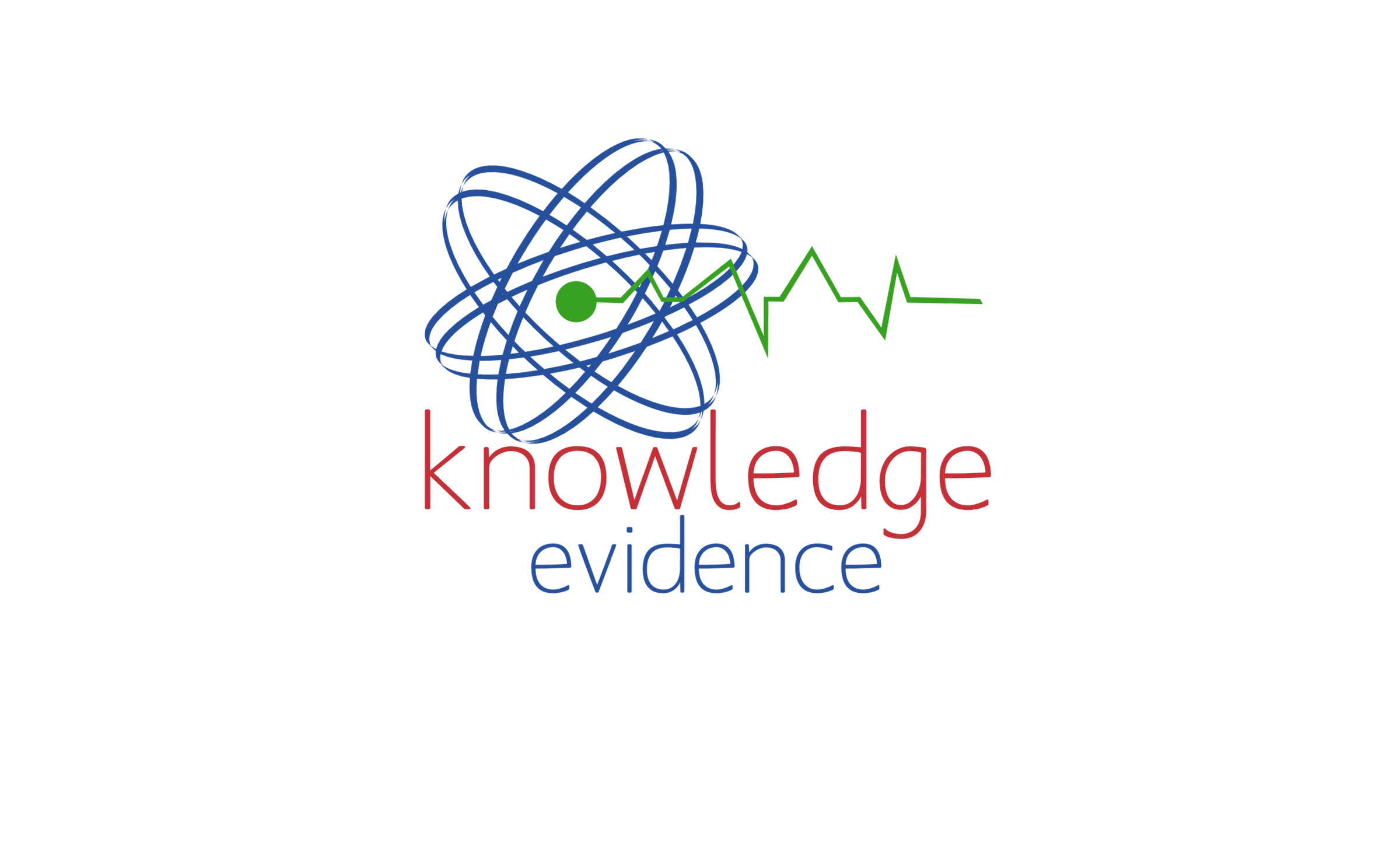
Into the Year of the Rabbit with nothing but good news for Chiropractic
Abstract: At the risk of being considered paranoid I state that every word of this Editorial was written by me. I can also give the assurance that I shall never knowingly resort to having an Artificial Intelligence write anything for me. Unfortunately this stance is not universally adopted by some who write for publication in the chiropractic literature and I am aware of at least 1 writer who is pushing the boundaries to see how much of a paper he/she/they/it can have written by ChatGPT and still be published under that person’s own name.
Of course I find this sad, not only because of my own efforts but because of what it confers on those who resort to such intellectual cheating. For 60 years or so I have contributed to my income by assembling words for specific purposes, and now it is tragic to think that a chiropractor with a good mind feels they can not write without Verbal Viagra.
I explore this and some related matters in this editorial and conclude that living through a major earthquake (M9) allows a re-commitment to matters for which I hold value; the truth of subluxation in Chiropractic is one of those things. I like to think life is better for me when I nurture my own natural intelligence in celebration of the powers granted to us by Universal Intelligence, against which anything artificial is as bad for us as aspartame or Erythritol.
Indexing Terms: Chiropractic; Palmerian System; subluxation; Artificial Intelligence (AI); education standards.
Cite: Ebrall P. Into the Year of the Rabbit and nothing but good news for chiropractic. URL Asia-Pac Chiropr J. 2023;3.e. URL apcj.net/Papers-Issue-3-4/#EbrallEditorialApril2023
Note: The Tsunami video is disabled by the owner from running on other websites. This is the link: https://youtu.be/0E2Q7kr4L2c or you can download the PDF and use that link within the paper.
Philosophy: To be, or not to be?
Abstract: All students of chiropractic learn a philosophy. Practitioners try to help students by placing an importance on this or that form of chiropractic philosophy.
The WCCS welcomes all philosophies in the belief that by understanding each other and working together, we can achieve more for the growth of chiropractic than by taking dogmatic opposing positions.
We value this fellowship based around our common education and learning.
Indexing terms: Chiropractic; World Congress of Chiropractic Students, WCCS, philosophy.
Cite: Abrahams T. Philosophy: To be or not to be? Asia-Pac Chiropr J. 2023;3.4. URL apcj.net/papers-issue-3-4/#AbrahamsPhilosophy
Path to Australian registration (as a chiropractor)
Abstract: An infographic is presented outlining the steps a chiropractic must take to become a registered chiropractor under the National Law in Australia.
Indexing Terms: Chiropractic; Australia; Registration; Licensure.
Cite: Eldemire J. Path to Australian registration (as a chiropractor). Asia-Pac Chiropr J. 2023;3.4. URL apcj.net/Papers-Issue-3-4/#EldemireRegistrationPath.
A critical approach for learning the Operating Principles of Sacro Occipital Technique (SOT) Chiropractic
Abstract: This paper presents a structured approach to understanding the principles of the Sacro Occipital Technique (SOT) and its contemporary application. The guidance is presented as narrative with key points to facilitate learning the technique.
The paper is presented as a Master Class in chiropractic technique.
Indexing Terms: Chiropractic; Sacro Occipital Technique; SOT; technique; DeJarnette.
Cite: Getzoff H. A critical approach for learning the Operating Principles of Sacro Occipital Technique (SOT) Chiropractic. Asia-Pac Chiropr J. 2023;3.4. URL apcj.net/Papers-Issue-3-4/#GetzoffSOTPrinciples
Click the presentation to play it
Channeling healing energy: The power of touch in the chiropractic clinical encounter, Part three
Abstract: Osteopath Dr Viola Frymann placed an emphasis on the art of touch in the therapeutic encounter. In 1970 the founder of SOT Major DeJarnette noted regarding touch ‘Light fingers, soft touch, slow movement, warm hands. Eternal patience with difficult problems’. Our touch with cranial technique in particular is likewise processed through the patient’s central nervous system, mind, and spirit. This can affect a patient’s emotional state and guides the nature of caring they might sense from their doctor.
Chiropractors can use our touch or palpation as non-verbal communication to guide our chiropractic care as well as possibly obtain pertinent information about our patient’s history
Indexing Terms: Chiropractic; chiropractor; touch; palpation.
Cite: Blum C. Channeling healing energy: The power of touch in the chiropractic clinical encounter, Part three. URL Asia-Pac Chiropr J. 2023;3.3 URL apcj.net/Papers-Issue-3-4/#BlumHealingEnergy3
Obstructive Sleep Apnea, Gender, and Tone
Abstract: Medical options for the assessment then treatment of Obstructive Sleep Apnea are time-consuming and expensive.
Conventional chiropractors are able to assess for this clinical problem and prescribe conservative vocal and muscle-training exercises to support spinal correction by adjustment where indicated.
We recommend this should be the first line of assessment in patients with indications of Obstructive Sleep Apnea.
Indexing terms: Chiropractic; Obstructive Sleep Apnea; Speech muscle exercises.
Cite: Masarsky CS. Obstructive Sleep Apnea, Gender, and Tone [The wide-angle lens]. Asia-Pac Chiropr J. 2023;3.4. URL apcj.net/papers-issue-3-4/#MasarskySleepApnea
Non-cardiac chest pain: interdisciplinary algorithm for clinical care
Abstract: Non-cardiac chest pain (NCCP) is a common clinical presentation marked by long-term impairments in functioning, reduced quality of life, and over-utilisation of the health care system. Considering the widespread recognition that NCCP involves a complex dynamic of interrelated biopsychosocial influences, evidence-based multidisciplinary approaches to assessment and management increasingly are being recommended.
Yet, despite the frequency with which neuromusculoskeletal (NMS) dysfunctions are implicated in the aetiology of this disorder, NMS specialties (such as chiropractic) typically receive short shrift in extant multidisciplinary models.
Accordingly, the present paper proposes an interdisciplinary algorithm for clinical care that, if validated by subsequent research, may hold promise for improving collaboration between allopathic and chiropractic practitioners, enhancing patient outcomes, and reducing the financial burden of patient care. Implications for empirically-supported refinements of the algorithm are discussed and future research directions are highlighted.
Indexing Terms: Chiropractic; chest pain; non-cardiac pain; clinical algorithm.
Cite: Terre L, Blum CL Non-cardiac Chest Pain: An interdisciplinary algorithm for clinical care. Asia-Pac Chiropr J. 2023;3.4 URL apcj.net/papers-issue-3-4/#TerreNoncardiac.
A Colossal Chiropractic Footprint: Reflections on the influence of George J Goodheart Jr, DC, DIBAK, Founder of Applied Kinesiology upon Chiropractic, Medical, and Complementary and Alternative Medical thinking around the world
Abstract: An annotated presentation of ephemera celebrating the life and work of Dr George J Goodheart Jr, who passed away in March 2008 after a lifetime spent serving patients and his beloved profession.
One of the world’s most influential forces for chiropractic research and innovation, Goodheart dedicated his life to the future success of chiropractic and applied kinesiology. His passion for functional diagnosis – ‘diagnose the need, supply the need, observe the result’ – for the most unusual and the most common patient problems was felt at chiropractic, medical, and dental colleges, seminars, and lecture-tours all over North America, Europe, Australia and Asia.
Hailed as a friend and inspiration to many, Goodheart is a man to be remembered, honoured, and modelled as a pioneer of ‘the chiropractic genius’.
Indexing Terms: chiropractic; AK; Applied Kinesiology; George Goodheart; pioneers.
Cite: Cuthbert S. A Colossal Chiropractic Footprint: Reflections on the influence of George J Goodheart Jr, DC, DIBAK, Founder of Applied Kinesiology upon Chiropractic, Medical, and Complementary and Alternative Medical thinking around the world. Asia-Pac Chiropr J. 2023;3.4. URL apcj.net/papers-issue-3-4/#CuthbertGoodheart.
A review of manual methods of traditional biofeedback for improving brain and body health and fitness
Abstract: Manual biofeedback is applicable for clinical use with some components as a beneficial lifestyle routine. These approaches include simple, low-cost, effective methods that can be applied quickly in the clinical setting with the potential to provide rapid and significant improvements in physical and mental health. Three separate types of manual biofeedback are detailed:
1) EMG-type biofeedback employs manual muscle testing and is useful for both assessment and treatment of brain, spinal cord, and local injuries that cause sensorimotor deficits associated with neuromuscular dysfunction;
2) EEG-type manual respiratory biofeedback addresses brain and body function through the promotion of alpha brain waves using short (~5-minute) deep-breathing exercise sessions shown to improve cardiovascular and autonomic function with potentially far-reaching health effects; and
3) Heart rate exercise training is a biofeedback approach employing simple wearable technology to help prevent physical, biochemical, and mental-emotional stress common in sports, while improving fitness performance and reducing the accumulation of excess body fat that raises the risk of chronic disease and infection.
Manual versions of tradition biofeedback are directly relevant and applicable to various clinical practice approaches including in-office patient care, rehabilitation, follow-up in-home care, and lifestyle recommendations. With the capability to influence a wide range of brain and body health and fitness, manual biofeedback is a low-cost, time-saving natural approach. In addition to a potential clinical research topic, it also has important healthcare and public health implications. Manual biofeedback can complement many types of manual therapies and play a role in preventative care.
Indexing Terms: EMG; EEG; neurofeedback; manual biofeedback; manual muscle testing; respiratory biofeedback; heart rate training.
Cite: Maffetone P. A review of manual methods of traditional biofeedback for improving brain and body health and fitness. Asia-Pac Chiropr J. 2023;3.4. URL apcj.net/Papers-Issue-3-4/#MaffetoneBiofeedback
Changes in gait parameters, muscle tone, and radiographic parameters in post-ischemic stroke patients following chiropractic care
Abstract: This retrospective chart review was performed to assess the effect of chiropractic intervention in patients with post-ischemic stroke. Seven patients with a history of ischemic stroke who underwent chiropractic adjustment were retrospectively evaluated.
A chart review was performed to extract age, medical history, and treatment interventions. The magnitude of spinal subluxation was determined using standing radiography (X-ray). A comparison of measurements from pre- and post-treatment radiographs revealed that cervical lordosis had improved. Additionally, sensorimotor function of the upper and lower extremities, muscle activation, gait parameters, and quality of life improved in all patients.
These results suggest that chiropractic care can be an effective part of post-stroke rehabilitation.
Indexing Terms: Chiropractic; post ischemic stroke; gait parameters; spinal manipulation.
Cite: Ling CW. Changes in gait parameters, muscle tone, and radiographic parameters in post-ischemic stroke patients following chiropractic care. Asia-Pac Chiropr J. 2023;3.4. URL apcj.net/Papers-Issue-3-4/#LingGait.
Opinions and perceptions regarding access to Musculoskeletal Rehabilitation Clinics for Latino Immigrants in the United States: A Qualitative case study
Abstract: The purpose of this paper is to investigate the opinions and perceptions regarding access to musculoskeletal rehabilitation clinics for Latino Immigrants within the United States. A qualitative, case study approach was chosen because it is the best application for investigating experience and perspective in a specific case.
A questionnaire was developed to obtain the necessary information and a specific subject (a 52-year-old female of Mexican nationality) was interviewed using a semi-structured format. Three main themes emerged from the coding process, and these were: barriers to access, mental health, and ‘survival’. During the study, the main barriers to access were found to be the inability to speak English, and the fear of deportation. Depression and anxiety were the main mental health conditions reported in the literature on Latino immigrants and causative factors are related to a limited social life, fear of deportation, and language barrier. Finally, the theme of ‘survival’ which is related to ‘stress physiology’ is another factor that deters Latino immigrants to visit rehabilitation clinics.
If one looks at this theme through the lens of Maslow’s hierarchy of needs it can be extrapolated that Latino immigrants are usually on the first two most basic levels, which are physiological needs and safety. This could affect their ability to make better decisions regarding their health and therefore not choosing an approach such as preventative care, under which many rehabilitation practices fall. More research, with a larger sample size, must be performed on this important topic in order to improve the health and quality of life of the Latino immigrant population.
Indexing terms: Chiropractic; Latino Immigrants; qualitative analysis; access to rehabilitation.
Cite: Osuna A, Pérez-Uñate A. Opinions and perceptions regarding access to Musculoskeletal Rehabilitation Clinics for Latino Immigrants in the United States: A Qualitative case study. Asia-Pac Chiropr J. 2023;3.4:Online only. URL www.apcj.net/papers-issue-3-4/#OsunaLatinoAccess
Side effects of the Chiropractic adjustment: And questions which arise
Abstract: In this paper I draw from my clinical experience with patients reporting improvements in conditions beyond their presenting complaint following a course of care to resolve that complaint.
This raises the question of whether the Chiropractic adjustment is specific for one named condition, typically a musculoskeletal complaint reported in the literature, or whether that adjustment has side effects which beneficially impact other conditions being experienced by the patient but not reported on presentation?
Examples are presented relating to a range of ‘other’ clinical changes observed following chiropractic care, and I give the questions that these observations raise in my mind.
Indexing Terms: Chiropractic; research models; clinical questions; side-effects.
Cite: Janke OJ. Side effects of the Chiropractic adjustment: And questions which arise. Asia-Pac Chiropr J. 2023;3.4:Online only. URL www.apcj.net/papers-issue-3-4/#JankeSideEffects
One month of abstracts from the CHIROPRACTIC page on Facebook
This paper presents all abstracts published on the CHIROPRACTIC Facebook page for the month of February 2023.
This free FB site is recommended for chiropractors wanting to keep up to date with the discipline's literature.
Cite: Lin J. One month of abstracts from the CHIROPRACTIC page on Facebook. Asia-Pac Chiropr J. 2023;3.4 URL apcj.net/Papers-Issue-3-4/#LinFacebookAbstracts
Applied Kinesiology Chiropractic and Cranial Therapy
Abstract: Many health problems arise from a mechanism in the body about which many doctors are unaware: the cranial-sacral mechanism. Members of the chiropractic and osteopathic professions have made a major effort to understand dysfunction in this area and how to correct it. Unfortunately this knowledge has not been widely dispersed, and a majority of individuals continue to suffer with health problems which could be corrected if a larger number of doctors were aware of the wide range of problems developing from disturbances in the mechanics of the human head.
Many of the areas in which application of the cranial concept might be of great benefit are controlled by specialist practitioners in other disciplines who are not yet aware of this very potent and vital system operating in their patients. These specialties include headache and neck pain clinics, paediatrics, obstetrics, dentistry, psychiatry, ear-nose-and-throat doctors, and the general medical practitioner. Other conditions that may be caused by cranial problems are headaches, TMJ dysfunction, hypertension, impaired brain circulation, disturbances in the endocrine and digestive systems, vision, hearing, and general neurologic disorganisation.
Parents and teachers often assign improper labels to children such as ‘slow learner’, ‘poor reader’, ‘dyslexic’, ‘poor listener’, ‘”hyperactive’, or ‘poorly disciplined’, not realising that the sensorimotor confusion arising from cranial disturbances underlie each of these conditions. Unfortunately, these patients tend to travel from doctor to doctor receiving only temporary, if any, relief from their condition.
This paper presents a basic clinical approach to Cranial work which has been found to allow good outcomes in cases such as those mentioned.
Indexing Terms: Chiropractic; AK; Applied Kinesiology; George Goodheart
Cite: Cuthbert S. Applied Kinesiology Chiropractic and Cranial Therapy: About the TMJ. Asia-Pac Chiropr J. 2023;3.4. URL apcj.net/papers-issue-3-4/#CuthbertCranial
Towards a better relationship with patients on the Autism spectrum
Abstract: It can be difficult to commence a clinical conversation with a presenting patient who sits somewhere on the Autism Spectrum. Usually, as such patients grow older, they come to form a healthy understanding of their condition and are able to communicate in a way with which they are comfortable.
During my field-work placement in my Master of Clinical Chiropractic I worked with a Principal Chiropractor who was himself on the spectrum and with a strong understanding of his condition, especially from his perspective as a chiropractor.
I summarise my key learnings from these encounters in the form of a narrative which touches on some little things a chiropractor m ay be able to include in their clinical conversations with such patients.
Indexing Terms: Chiropractic; autism; Autism spectrum Discorder; clinical conversations.
Cite: Eldemire J. Towards a better relationship with patients on the Autism spectrum. Asia-Pac Chiropr J. 2023;3.4. URL apcj.net/Papers-Issue-3-4/#EldemireAutismSpectrum
The emergence of Chiropractic Education in Australia
Abstract: This paper describes the emergence of chiropractic education in Australia. Chiropractic clinical practice started in Australia about 20 or so years after DD Palmer first started teaching chiropractic in 1897. This point is used to anchor Palmer’s idea of chiropractic as a teachable construct which has lead to some 50 institutions globally. The establishment of chiropractic in this world region commenced with Palmer graduates in New Zealand then Australia between 1914 and the 1920s. The American-trained Palmer graduates formed the mainstream of the chiropractic profession which remained subluxation-focussed while a variety of self-initiated programs without any trained chiropractors as teachers emerged and eventually dissipated or merged. These programs produced practitioners as osteopaths and naturopaths and then, as government inquiries commenced, chiropractors. The relationship between this stream of self-proclaimed practitioners of various disciplines and the mainstream US-trained chiropractors was strained to say the least. Seen as a feud, it resulted in each forming their own professional associations and then very different education programs. Through mergers these programs continue today as Macquarie University and RMIT University. Two other government programs have emerged, at Murdoch University and Central Queensland University, and a fifth Australian program is establishing itself as a private institution in Adelaide. This college, together with the New Zealand College of Chiropractic, are the only two of the 6 colleges holding true to Palmer’s founding concepts.
Indexing Terms: Chiropractic; history; Australia; education; accreditation; International College of Chiropractic; ICC; RMIT; PIT; Sydney College; Macquarie University; NZCC; ACC.
Cite: Ebrall P. The Emergence of Chiropractic Education in Australia. Asia-Pac Chiropr J. 2023;3.4 URL apcj.net/papers-issue-3-4/#EbrallEducationEmergenceAustralia
Disclaimer
This journal is a professional journal by chiropractors for chiropractors. Readers not fully trained as a chiropractor should not act on their own on any information published in these pages and should always discuss their situation with their chiropractor.
The papers addressing COVID report current information at their time of writing. The topic is fast moving and readers are encouraged to extract threads from what we publish here and undertake their own searches for the most recent information.

